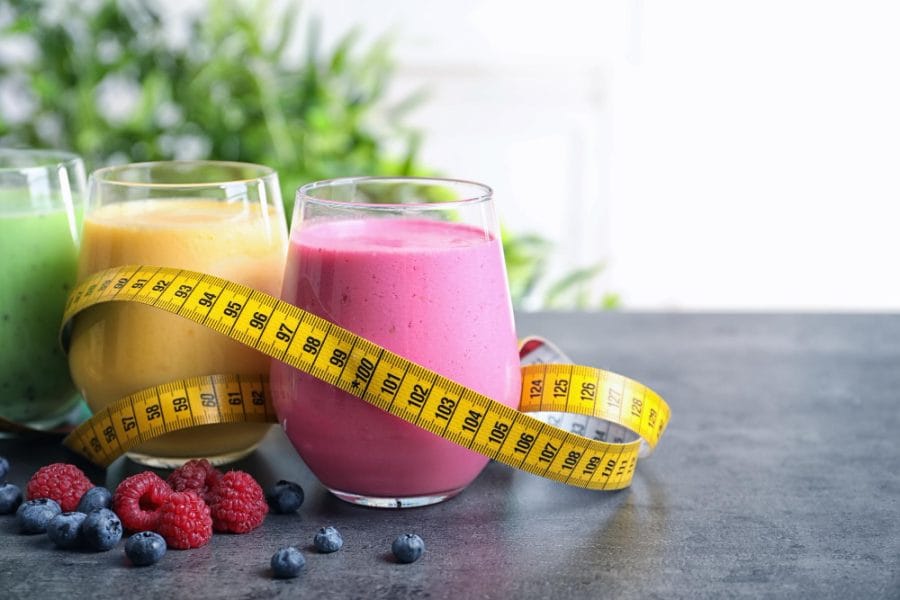Introduction
In the world of quick fixes and convenient meal options, weight loss shakes have become incredibly popular, promising a straightforward path to shedding pounds without the hassle of meal prep or calorie counting. These shakes are marketed as meal replacements or supplements that help individuals control portions and cut calories while still providing essential nutrients, often with claims of supporting faster weight loss and greater ease in managing weight over time. For busy people, those new to dieting, or anyone looking for structure, shakes can seem like an ideal solution. But do these products truly live up to the hype? And what does the science actually say about their effectiveness? This article dives into the research behind weight loss shakes, examining whether they deliver sustainable results, their potential health impacts, and what factors are key to achieving long-term success for those considering shakes as a weight loss aid.
Affiliate Disclaimer
This blog post may include links to affiliate sites. If you click on an affiliate link and make a purchase, we may earn a small commission or receive other compensation at no extra cost to you. Please note that many of the links on our site are affiliate links. Our use of these links does not impact the products, services, or websites we recommend to you. This disclaimer covers all forms of communication with you, including our website, email, phone, social media, products, and other platforms.
Amazon Affiliate Disclaimer
We participate in the Amazon Services LLC Associates Program, an affiliate marketing program that allows us to earn fees by linking to Amazon.com and its affiliated sites. If you click on an Amazon affiliate link on our site and make a purchase, we may receive a small commission at no additional cost to you.
1. What Are Weight Loss Shakes?
Weight Loss Shakes Defined
Weight loss shakes are specially formulated beverages designed to support calorie control and nutrition balance, often with the aim of replacing one or more meals to help individuals manage weight more easily. These shakes typically consist of a blend of protein, carbohydrates, fiber, and essential vitamins and minerals, ensuring a relatively balanced intake that can help stave off hunger while reducing overall daily calories. Unlike regular protein shakes, which mainly aim to increase protein intake, weight loss shakes are usually created to serve as complete meal replacements, though some are lower in calories to be used as a snack rather than a full meal.
Types of Weight Loss Shake
There are several main categories of weight loss shakes, each designed with slightly different goals and audiences in mind:
- Meal Replacement Shakes: These are meant to replace one or more meals and usually have a balanced macronutrient profile, including proteins, carbs, and fats, to offer comprehensive nutrition while keeping calories in check.
- High-Protein Shakes: Some weight loss shakes focus on high protein content, as protein promotes satiety and has a higher thermic effect (calories burned during digestion) than fats or carbohydrates. High-protein shakes are often used by those who want to reduce appetite between meals or after workouts.
- Low-Carb or Keto Shakes: Catering to those on low-carbohydrate or ketogenic diets, these shakes limit carbs and emphasize fat and protein, promoting fat burning for energy in the absence of carbohydrates.
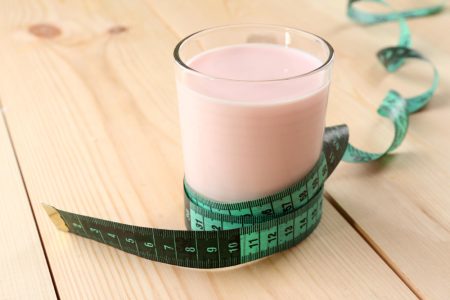
Key Ingredients in Weight Loss Shakes
Weight loss shakes commonly include proteins like whey, casein, or plant-based options (such as pea, soy, or rice protein), which help curb hunger and maintain muscle mass during weight loss. Fiber is often added to support digestive health and prolong satiety, while essential vitamins and minerals (e.g., calcium, magnesium, vitamins A, D, and B-complex) ensure that people who are reducing food intake still receive adequate nutrients.
However, some commercial shakes may also contain artificial sweeteners, flavor enhancers, and stabilizers to improve taste and texture. It’s important to read labels carefully, as these additives can vary greatly and may affect health or personal preferences.
Distinguishing Weight Loss Shakes from Other Shakes
It’s easy to confuse weight loss shakes with other types of nutritional shakes, but each serves a unique purpose. Protein shakes, for instance, are usually aimed at increasing protein intake without necessarily replacing a meal or reducing calories. Similarly, smoothie-based shakes can be nutritious but may not always have the calorie and nutrient control needed for weight loss.
2. How Weight Loss Shakes Are Supposed to Work
Creating a Caloric Deficit
At the heart of any weight loss strategy is the concept of a caloric deficit, which simply means consuming fewer calories than the body needs to maintain its current weight. Weight loss shakes are specifically designed to make this process easier by replacing higher-calorie meals with a controlled, lower-calorie option that still meets basic nutritional needs. By substituting a meal with a shake that’s often between 200-400 calories, individuals can reduce their daily caloric intake without the mental work of portion control or extensive meal planning. This calorie control aspect is one of the key reasons weight loss shakes have gained popularity among those looking to shed pounds.
Portion Control and Nutrient Density
One of the challenges in a traditional diet is keeping portions in check, especially in a food-rich environment. Weight loss shakes take away the guesswork by offering a pre-determined portion that is specifically crafted to fill you up without excessive calories. In addition to calorie reduction, these shakes often incorporate a carefully balanced blend of macronutrients – primarily protein and fiber – which are known to support fullness and reduce hunger pangs between meals. Fiber slows digestion, while protein has a high satiety effect, helping people feel full longer.

Nutrient density is another advantage of weight loss shakes. With added vitamins and minerals, these shakes are designed to prevent nutrient deficiencies, which can sometimes occur when reducing food intake. While they may not offer the variety of nutrients found in whole foods, shakes aim to cover essential nutritional bases.
The Role of Protein in Metabolism and Satiety
Protein is a key ingredient in weight loss shakes because it not only supports muscle maintenance but also helps boost metabolism through the thermic effect of food (TEF). The TEF refers to the calories burned during digestion, which is higher for protein than for fats or carbohydrates. By including ample protein, weight loss shakes can slightly increase the number of calories the body burns while also promoting feelings of fullness. This is especially beneficial when aiming to reduce caloric intake, as it helps counteract the common issue of persistent hunger that can derail diet plans.
Managing Blood Sugar and Energy Levels
Many weight loss shakes are designed to prevent sharp spikes in blood sugar levels, which can lead to energy crashes and increased hunger. By incorporating balanced macronutrients and often limiting simple sugars, these shakes promote a steady energy release, keeping blood sugar levels more stable. This is particularly important for individuals with insulin resistance or blood sugar concerns, as stabilized blood sugar can help curb cravings and make it easier to stick to a calorie-reduced diet.
In short, weight loss shakes aim to create a calorie deficit through portion control and nutrient balance, utilizing protein and fiber to enhance satiety and help manage blood sugar. By understanding these mechanisms, users can make more informed choices about incorporating shakes into their weight loss routines.
3. Scientific Studies on Weight Loss Shakes
Overview of Key Studies and Findings
Scientific studies have examined the effectiveness of weight loss shakes as a tool for managing weight, particularly in comparison to traditional diets that rely on calorie counting and whole foods. Research generally supports the idea that weight loss shakes can be an effective short-term strategy for weight management when used responsibly. For example, a 2011 study published in Obesity Facts found that individuals who incorporated meal replacement shakes lost significantly more weight over a 12-week period than those following a conventional diet. The controlled portions and ease of use provided by weight loss shakes can make it easier for people to maintain a calorie deficit without feeling deprived.
Another notable study published in The Journal of Nutrition in 2018 observed that participants who replaced one to two meals per day with a nutritionally complete shake achieved similar, and sometimes greater, weight loss results than participants who focused solely on reducing portion sizes of whole meals. These findings underscore the potential effectiveness of shakes for weight management, particularly among those seeking structured solutions.
Long-Term vs. Short-Term Effects
One of the primary questions surrounding weight loss shakes is whether they deliver lasting results. Studies indicate that weight loss shakes may be most effective in the short term, particularly in the initial phases of weight loss, where rapid results can be motivating. However, research also suggests that long-term success depends on transitioning to a sustainable, whole-food-based eating pattern after the initial use of shakes. A study in Obesity Research highlighted that individuals who discontinued meal replacement shakes after a period of successful weight loss tended to regain weight if they did not adopt lasting dietary changes.
The general scientific consensus is that while weight loss shakes can provide an effective "jumpstart" for weight loss, their benefit wanes if users don’t eventually incorporate other dietary and lifestyle adjustments.
Impact on Satiety and Hunger Hormones
One reason weight loss shakes are effective is their impact on hunger-regulating hormones such as ghrelin and leptin. High-protein shakes have been shown to help reduce levels of ghrelin, often called the "hunger hormone," which signals the brain to induce feelings of hunger. By keeping ghrelin levels lower for longer, weight loss shakes can help control appetite and reduce the likelihood of overeating. Research also shows that a high protein intake can help support leptin function, a hormone that signals fullness.
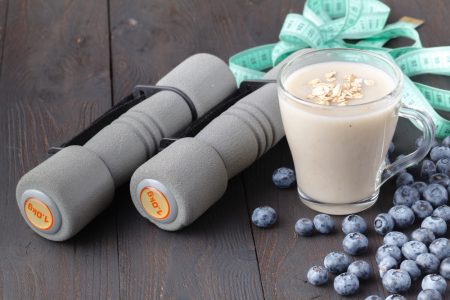
In a 2015 study published in Appetite, researchers found that participants consuming a high-protein weight loss shake experienced lower ghrelin levels and reported feeling fuller over the course of the day compared to participants who consumed a low-protein alternative. This finding suggests that the strategic use of protein in weight loss shakes may have specific physiological effects that support appetite control, making it easier to maintain a calorie deficit.
Summary
Scientific studies generally support weight loss shakes as an effective tool for short-term weight management, primarily due to their impact on caloric intake, satiety, and hunger-regulating hormones. However, their long-term effectiveness requires a transition toward a balanced, whole-food diet to maintain weight loss results.
4. Benefits of Weight Loss Shakes (Supported by Science)
Convenience for Busy Lifestyles
One of the most appealing benefits of weight loss shakes is their convenience. For individuals with busy schedules or limited time to prepare balanced meals, weight loss shakes offer a quick, ready-to-drink alternative that fits into almost any lifestyle. Studies indicate that simplicity and convenience in meal planning are often associated with better adherence to dietary goals. For people who struggle with the logistics of shopping, meal prep, and portion control, weight loss shakes provide a solution that requires minimal effort. This ease of use makes it more likely that users will stick to their calorie and nutrition targets, which can be essential for weight management success.
Portion Control and Reduced Caloric Intake
Portion control is a significant challenge in weight management, particularly with the prevalence of oversized meals and snacks. Weight loss shakes solve this issue by offering a pre-portioned meal or snack that reduces the risk of overeating. Most weight loss shakes are designed to be around 200-400 calories, which helps users easily control their daily caloric intake without complex tracking or measuring. Research shows that portion-controlled foods, such as shakes, lead to consistent weight loss outcomes due to the ease of maintaining a calorie deficit. For individuals who tend to overeat or find it difficult to gauge proper portion sizes, weight loss shakes can act as a reliable way to control caloric intake consistently.
Nutrient Support and Reduced Nutrient Deficiencies
Another benefit of weight loss shakes is their nutrient density, as they are often fortified with essential vitamins and minerals. For those who may be reducing their overall food intake, it’s important to still consume adequate nutrients to avoid deficiencies. Many weight loss shakes are enriched with nutrients such as calcium, vitamin D, magnesium, and B vitamins, all of which are crucial for energy, bone health, and overall wellness. By providing these nutrients in a controlled calorie package, weight loss shakes help users avoid the pitfalls of low-calorie diets that may lack balance.
Protein and Fiber for Satiety
Protein and fiber are two components commonly found in weight loss shakes that can significantly improve satiety and reduce hunger throughout the day. Protein has a well-documented satiating effect, and its presence in weight loss shakes can help keep individuals feeling full longer, which may reduce the temptation to snack between meals. Fiber, often added in the form of soluble fiber or prebiotics, also slows digestion and stabilizes blood sugar levels, preventing the sharp hunger spikes that can lead to overeating.
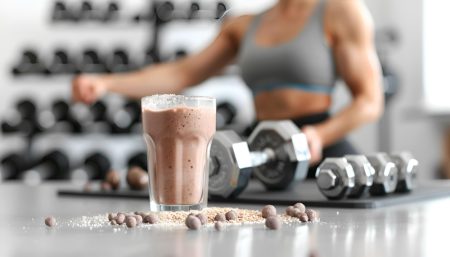
Easily Adjustable to Dietary Needs
For individuals with specific dietary needs or preferences, weight loss shakes come in a wide range of options, from plant-based and dairy-free shakes to gluten-free and low-sugar varieties. This flexibility allows users to select shakes that align with their dietary restrictions or preferences, making them a practical option for many people looking to manage their weight while honoring their health needs.
In summary, weight loss shakes offer benefits in terms of convenience, portion control, nutrient density, and satiety, all of which can contribute to successful weight management. When used thoughtfully, they can be a valuable tool for those looking to lose or maintain weight while leading a busy lifestyle.
5. Potential Downsides and Considerations
Reliance on Shakes for Long-Term Dieting
While weight loss shakes can offer a convenient, calorie-controlled solution, one potential downside is the risk of becoming overly reliant on them for weight management. When used as a primary meal replacement for an extended period, weight loss shakes may discourage individuals from learning healthy eating habits that involve whole foods. Studies have shown that a diet heavily reliant on meal replacements can lead to difficulties in maintaining weight loss once regular meals are reintroduced. Transitioning back to whole foods is essential for long-term success, as it promotes sustainable eating habits, culinary skills, and familiarity with healthy portions.
Low Fiber Content in Some Shakes
Fiber is an essential nutrient for satiety, digestion, and blood sugar regulation, yet some weight loss shakes may not contain enough fiber to meet daily needs. Diets low in fiber can lead to issues like constipation and hunger between meals, which may undermine weight loss goals. While some high-quality weight loss shakes include adequate fiber, many options on the market lack it or use only minimal amounts. For those who rely on shakes as meal replacements, it’s important to either choose fiber-enriched shakes or add extra fiber sources, like fruits, vegetables, or chia seeds, to maintain digestive health and support fullness.
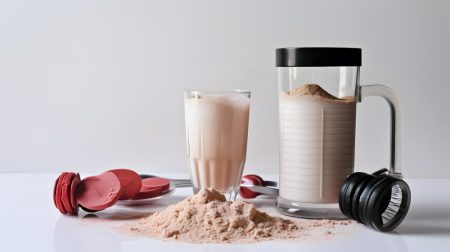
Artificial Ingredients and Additives
A common concern with many commercial weight loss shakes is the inclusion of artificial sweeteners, preservatives, and other additives used to enhance flavor, texture, and shelf life. Ingredients like aspartame, sucralose, and artificial colorings may appeal to those seeking low-sugar options, but there is ongoing debate about their impact on health when consumed regularly. While the FDA deems most of these additives safe in moderation, some individuals report digestive discomfort, headaches, or other symptoms when consuming shakes with artificial ingredients. Opting for weight loss shakes with minimal additives and natural ingredients may be beneficial, especially for those with sensitivities.
Potential Nutritional Gaps
Though weight loss shakes are often fortified with essential vitamins and minerals, they may not offer the same diversity of nutrients found in whole foods. Whole foods provide phytonutrients, antioxidants, and varied fiber types that aren’t always present in shakes. Solely relying on shakes can result in a diet that, while balanced in macronutrients, lacks the broader nutritional profile that whole, unprocessed foods provide. To counteract this, incorporating a variety of vegetables, whole grains, and proteins alongside shakes can help bridge any nutritional gaps and promote a more holistic approach to health.
Sustainability and Cost
While weight loss shakes can be convenient, they may not be a sustainable option for everyone, particularly due to cost. Many high-quality weight loss shakes are priced higher than standard grocery items, making them challenging to incorporate into a budget-friendly, long-term diet. Additionally, reliance on single-use shake containers or packets can increase waste, which may be a concern for environmentally conscious consumers. Exploring more sustainable options, like homemade shakes or reusable containers, can mitigate these issues for those who wish to make shakes part of their regular diet.
In conclusion, weight loss shakes offer numerous benefits but come with certain drawbacks, including potential over-reliance, low fiber content, artificial additives, nutritional gaps, and sustainability challenges. Balancing shakes with whole foods can help address these issues, supporting a healthier, long-term weight management approach.
6. Are Weight Loss Shakes Effective for Everyone?
Individual Differences in Metabolism and Weight Loss Response
While weight loss shakes offer a structured, calorie-controlled option for weight management, they may not work equally well for everyone. Each person’s metabolism is unique and influenced by factors such as age, genetic predispositions, and activity level. Studies show that some individuals respond more favorably to calorie restriction and meal replacement strategies, while others may experience minimal impact on weight loss when using weight loss shakes. For those with naturally slower metabolisms or hormonal imbalances, weight loss shakes alone may not create a sufficient caloric deficit to support noticeable weight loss, and a more comprehensive approach might be needed, incorporating exercise and whole-food-based meals.
Dietary Preferences and Satisfaction
The effectiveness of weight loss shakes also depends on personal preferences and eating behaviors. While some people find shakes satisfying and convenient, others may feel deprived or unsatisfied with liquid meals, which can lead to difficulty adhering to a shake-based regimen over time. Research indicates that dietary satisfaction is a strong predictor of weight loss success, as individuals are more likely to stick with a plan they enjoy. For those who prefer the texture and experience of eating whole foods, relying solely on weight loss shakes might not be sustainable, and incorporating shakes as part of a balanced diet, rather than a total replacement, may be more effective.
Potential Need for Additional Weight Management Strategies
Weight loss shakes can be a helpful tool in weight management, but some individuals may need a multifaceted approach to reach their goals. Studies on comprehensive weight loss programs that combine dietary changes with physical activity, behavioral counseling, and stress management tend to show higher long-term success rates than diet modifications alone. While weight loss shakes can assist in creating a calorie deficit, they don’t address the behavioral aspects of eating or factors like emotional eating, which can be significant barriers to weight loss for some. Adding lifestyle adjustments, such as mindful eating practices or regular exercise, can improve results for those who find that shakes alone aren’t effective.
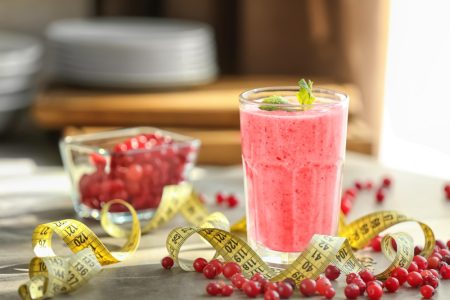
Alternative Approaches for Those Uncomfortable with Shakes
For people who find weight loss shakes unappealing, alternative strategies, such as intermittent fasting, calorie-controlled whole-food diets, or mindful portion control, may be more suitable. These methods allow individuals to enjoy traditional meals while still creating a calorie deficit, and they can be tailored to individual food preferences.
Customization for Long-Term Success
Ultimately, the most effective weight loss approach is one that fits the individual’s needs and lifestyle. For some, weight loss shakes are an invaluable resource, offering simplicity and structure that help achieve weight loss goals. However, others may find better success with a varied plan that includes whole foods and lifestyle modifications. Consulting with a nutritionist or dietitian can help personalize an approach, ensuring the plan aligns with personal health needs, preferences, and long-term goals.
In summary, while weight loss shakes can be effective for many, individual factors like metabolism, dietary satisfaction, and lifestyle needs play a significant role in determining their success. A balanced, flexible approach that considers these elements may be the best strategy for lasting weight management.
7. Tips for Choosing Effective and Healthy Weight Loss Shakes
Look for High-Quality Ingredients
When selecting weight loss shakes, one of the most important considerations is the quality of ingredients. Many commercial shakes contain fillers, artificial sweeteners, preservatives, and low-quality protein sources, which may impact both health and weight loss effectiveness. To maximize benefits, opt for shakes that use natural ingredients, such as plant-based protein or high-quality whey, and avoid those with excessive additives or artificial flavors. Protein sources such as pea, brown rice, or hemp for plant-based options, or whey and casein for dairy-based, are generally effective for satiety and muscle support. Whole-food-derived ingredients, like organic fruits, vegetables, and natural fiber sources, enhance nutritional value and help avoid the pitfalls of overly processed products.
Prioritize Protein and Fiber Content
Protein and fiber are key elements in effective weight loss shakes, as they play a significant role in satiety and support stable blood sugar levels. For optimal results, look for shakes that provide at least 15-20 grams of protein per serving. Protein helps build and maintain lean muscle, which is essential for a healthy metabolism and fat-burning. Fiber, on the other hand, slows digestion and promotes a sense of fullness. Aim for shakes with at least 5 grams of fiber per serving to help manage hunger and promote digestive health. Adding fiber-rich ingredients like chia seeds, flaxseeds, or psyllium husk to shakes can further enhance satiety and provide additional health benefits.
Watch for Sugar and Calorie Content
Many weight loss shakes, especially flavored varieties, contain added sugars that can hinder weight loss efforts. To avoid unwanted calories and sugar spikes, check the label for sugar content and aim for shakes with less than 5 grams of added sugar per serving. If natural sweetness is desired, consider adding whole fruits like berries or a small amount of honey rather than relying on pre-sweetened shakes. Also, pay attention to calorie content, ensuring it aligns with your weight loss goals. For meal replacement shakes, 200-400 calories per serving is typical, while snack shakes should be under 200 calories.
Consider Your Dietary Needs and Preferences
Weight loss shakes come in a variety of formulations to cater to different dietary needs, including vegan, gluten-free, low-carb, and keto-friendly options. Choose a shake that aligns with your personal dietary preferences and health goals to increase adherence and satisfaction. For instance, plant-based shakes may be ideal for those with lactose intolerance or dairy allergies, while low-carb shakes work well for those following ketogenic diets. Ensuring your shakes align with your dietary needs can make weight loss feel more seamless and enjoyable.
Select Shakes that Are Nutrient-Dense
Since weight loss shakes often replace meals, they should provide a balance of essential vitamins and minerals. Many high-quality shakes are fortified with nutrients like vitamin D, calcium, magnesium, and B vitamins to help prevent deficiencies when reducing food intake. Nutrient-dense shakes contribute to overall wellness and can support better energy levels, immune function, and mood, all of which are essential for sustainable weight management.
In summary, choosing effective weight loss shakes involves paying attention to ingredients, macronutrient balance, sugar content, and overall nutrient density. By selecting high-quality shakes that fit your dietary needs, you can improve satiety, manage caloric intake, and avoid common pitfalls associated with lower-quality products. This careful approach can make weight loss shakes a helpful and sustainable tool in a balanced weight management plan.
Conclusion
Weight loss shakes can be a practical tool for those looking to manage their weight in a structured and convenient way. By offering portion control, balanced nutrients, and a simplified approach to meal planning, these shakes provide a helpful option for individuals aiming to reduce calorie intake without sacrificing essential nutrition. However, while weight loss shakes may deliver promising results in the short term, long-term success often requires incorporating a variety of whole foods, developing mindful eating habits, and building a sustainable lifestyle that supports overall health. For best results, weight loss shakes should be used as part of a broader weight management strategy that includes physical activity and gradual transitions to balanced meals. With a mindful approach, these shakes can offer not only weight loss benefits but also a foundation for healthier dietary patterns, making them a versatile tool in a well-rounded wellness plan.


